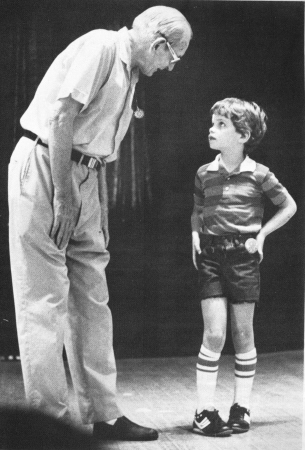|
Jones,
one of the relatively few professional jugglers to hold office, took
over an organization bursting at the seams and applied his business
acumen to its future. His was an investment philosophy of spending money
to make money, and he pushed the IJA into a more formal, modern,
professional direction. Today, the change seems to have been inevitable, but debate over IJA policy and goals continues.
On
the one hand were those who remembered the old conventions of 20 and 30
people. It was hard to reconcile the informal intimacy of the old IJA
with the new directions it was taking. Allied with these older veterans
were those who believed the
Other
members saw bigger as better. Tougher planning meant better results, and
more money meant better plans and more fun.
These
two sides of the same coin were arguing each other's reflection: 1)
Juggling is such a pure delight, it will spread by its own force of
rightness. 2) Juggling is such a pure delight, let's package it and
deliver it to the home of every child in the world.
While
the controversy over principles was as great as the controversy over
personalities 20 years before, juggling and the IJA were far too big to
be damaged. Instead, the dissension broadened the scope of juggling and
the forces settled into a truce. Bigness was inevitable. That was cruel
irony for those who sought to stifle it. The very people who wanted a
sleeping bag and rice ambience in the IJA swelled the organization into
bigness. And those who sought a more formal structure had to accommodate
the more relaxed views of others.
In
the end, we find ourselves pretty happily situated between late night
Club Renegade scenes and nationally covered Las Vegas-style
championships. The IJA may have become big-time, but, as Gene Jones
pointed out, you'd have to have a pretty jaundiced eye to call the IJA |
|
Old and new blend to form a rich tradition of IJA history. Bobby May and Anthony Gatto meet at the 1981 convention in Cleveland, Ohio. Juggler's World photo. |
